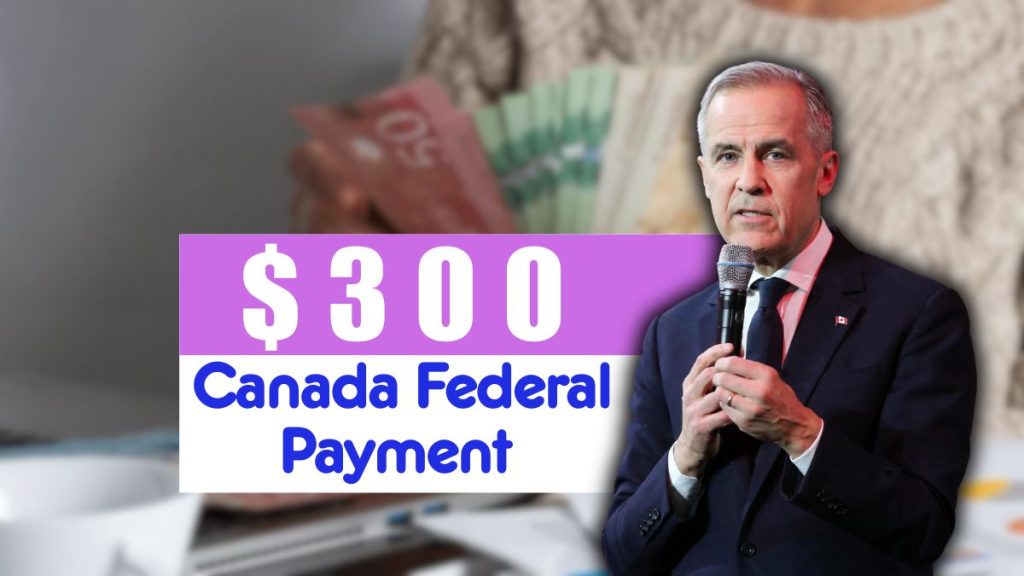Canada is set to implement a sweeping series of minimum wage increases across multiple provinces and territories in 2025. These changes, part of a broader effort to support workers amid persistent inflation and higher living costs, will affect both federally and provincially regulated employees.
The goal of the Canada Minimum Wage Hike 2025 is clear: to ensure fairer pay across the nation while helping low and middle-income workers maintain purchasing power. Every province and territory has released its updated rates and timelines, and federal workers will also see a new benchmark rate this year.
Understanding the Federal Increase

The federal minimum wage is set to increase by 2.4%, rising from $17.30 to $17.75 per hour, effective September 1, 2025. This increase affects workers in federally regulated sectors such as banking, telecommunications, postal services, and interprovincial transportation.
The federal adjustment acts as a floor rate — meaning if a province’s minimum wage is higher, the employee receives the higher of the two. This ensures consistent protection for workers regardless of jurisdiction.
Provincial Wage Hikes: Who’s Getting What
While the federal rate sets the baseline, most Canadians are employed in provincially regulated sectors. Therefore, provincial minimum wage increases have a more direct impact on household incomes.
Here’s a province-by-province breakdown of the 2025 minimum wage changes:
| Province/Territory | New Minimum Wage (per hour) | Effective Date |
|---|---|---|
| Federally Regulated | $17.75 | September 1, 2025 |
| Ontario | $17.60 | October 1, 2025 |
| Nova Scotia | $16.50 | October 1, 2025 |
| Manitoba | $16.00 | October 1, 2025 |
| Saskatchewan | $15.35 | October 1, 2025 |
| Prince Edward Island | $16.50 → $17.00 | October 1, 2025 |
| British Columbia | $17.85 | June 1, 2025 |
| Yukon | $17.94 | April 1, 2025 |
| Northwest Territories | $16.95 | September 1, 2025 |
| Nunavut | $19.75 | September 1, 2025 |
| Quebec | $16.10 | May 1, 2025 |
| New Brunswick | $15.65 | April 1, 2025 |
| Alberta | $15.00 | No Change for 2025 |
The highest rate remains in Nunavut, at nearly $20 an hour, while Alberta has chosen to freeze its rate at $15, marking no increase for 2025.
What the Wage Hike Means for Workers
The upcoming adjustments will provide much-needed financial relief for millions of workers across Canada. Rising costs for essentials such as food, rent, transportation, and energy have eroded real incomes, prompting provinces to update their rates more frequently.
The Canada Minimum Wage Hike 2025 reflects a nationwide effort to realign pay with inflation and improve job quality — particularly for part-time, student, and lower-income employees.
Wage Categories and Worker Types
Minimum wage rules can differ depending on employment type or age category. For instance, several provinces have unique rates for:
- Students under 18 years old
- Domestic or home-based workers
- Online platform workers (e.g., rideshare and delivery drivers)
Some provinces, such as British Columbia, have also started introducing additional compensation models, such as mileage-based pay for gig workers, to ensure fair earnings that reflect real working conditions.
How to Check if You’re Eligible for the Wage Increase
Eligibility for the new wage depends on your employment status and jurisdiction.
To qualify, you must:
- Be actively employed under a federal or provincial jurisdiction on or after the effective date.
- Work in a regulated sector that follows minimum wage laws.
- Meet category-specific rules, such as those applicable to students, domestic workers, or remote employees.
If your employment ends before the increase date, the higher rate won’t apply retroactively. Employers are legally required to update pay rates once the new wage takes effect.
How to Verify Your New Pay Rate
Once the new minimum wage becomes active in your province or federally, employees are encouraged to:
- Check their pay slips after the effective date to confirm the new hourly rate.
- Consult HR or payroll departments to clarify any discrepancies.
- Document proof of the new wage from official government websites if needed.
If an employer fails to comply, you can contact your provincial or territorial labor standards office to file a complaint. These agencies are empowered to enforce wage laws and investigate violations.
Overtime Rules Remain Unchanged
It’s important to note that while minimum wages are increasing, overtime regulations remain the same. Employees who work beyond the standard weekly threshold (typically 40 or 44 hours, depending on the province) must continue to receive at least 1.5 times their regular pay.
The 2025 increases simply raise the base rate upon which overtime is calculated. For example, if your minimum wage rises from $16 to $17, your overtime rate would rise proportionally from $24 to $25.50 per hour.
Why the Wage Hike Matters in 2025
The new minimum wage structure is not just about numbers — it’s about economic sustainability. Over the past few years, inflation and cost-of-living spikes have significantly outpaced wage growth.
In many Canadian provinces, housing and transportation costs alone consume over 40% of the average worker’s income. The government’s decision to adjust wages more frequently aims to stabilize real incomes and reduce reliance on social programs.
Economic Impact and Business Concerns
While the increases are celebrated by workers, some small and medium-sized businesses express concern about rising labor costs. Industries such as retail, hospitality, and food services — which employ a large number of minimum-wage workers — may see tighter profit margins.
However, economists argue that higher wages can also lead to improved worker retention, greater productivity, and increased consumer spending, which can help balance the short-term cost pressures on employers.
Multi-Phase Increases and Future Plans
Several provinces, including Prince Edward Island, have announced multi-phase minimum wage increases extending into 2026 and beyond. This staged approach allows employers time to adjust their budgets while ensuring steady progress toward higher living standards.
Additionally, some regions are experimenting with CPI-based indexing, meaning future wage adjustments will automatically track inflation — ensuring pay keeps pace with living costs without requiring new legislation each year.
How Provinces Decide on Their Wage Rates
Most provinces rely on independent wage boards or review committees that analyze data such as:
- Consumer Price Index (CPI) trends
- Labor market conditions
- Cost of living in urban vs. rural areas
- Employment growth projections
These reviews typically occur annually, with recommendations sent to provincial labor ministers before official announcements are made.
Key Highlights from the 2025 Wage Chart
- Highest Minimum Wage: Nunavut ($19.75/hour)
- Lowest Minimum Wage: Alberta ($15.00/hour)
- Largest Provincial Increase: British Columbia and Yukon, both exceeding $17.85/hour
- Earliest Effective Date: Yukon (April 1, 2025)
- Most Common Effective Date: October 1, 2025, for the majority of provinces
These figures illustrate how regional differences in cost of living shape local wage policies, ensuring fairness across Canada’s diverse economic landscape.
What Workers Should Do Before October 2025
With most provincial changes taking effect around October 1, 2025, workers should take the following steps to prepare:
- Review official wage announcements from provincial labor departments.
- Confirm pay category (e.g., student, adult, home-based, or platform worker).
- Communicate with HR about when your pay adjustment will be reflected.
- Keep documentation from government websites in case disputes arise.
Doing so helps ensure you receive the correct pay from the first eligible pay period.
Role of Employers and Enforcement
Employers are legally bound to update payroll systems and ensure compliance with new wage laws. Failure to do so can result in penalties or back pay orders.
Provincial labor boards regularly audit employers during minimum wage transitions, particularly in industries like hospitality, agriculture, and retail where violations are more common.
Connection Between Wage Hikes and Open Work Permits
The Canada Open Work Permit 2025 changes are closely linked with wage regulations. Temporary foreign workers and international students with valid work permits are also entitled to the same minimum wage protections as Canadian citizens.
This ensures equal treatment across the labor market and prevents exploitation of migrant workers in low-paying industries.
The Bigger Picture: Toward a Living Wage
While minimum wage adjustments are welcome, advocacy groups continue to push for a “living wage” — one that reflects the true cost of living in each community.
Living wage rates, often calculated by local coalitions, typically exceed the statutory minimum wage and aim to ensure full-time workers can afford essentials like rent, food, transportation, and childcare without financial strain.
Summary Table – Canada Minimum Wage Hike 2025 Overview
| Category | Details |
|---|---|
| Organization | Federal & Provincial Labour Departments |
| Program Name | Canada Minimum Wage Hike 2025 |
| Country | Canada |
| Wage Range | $15.00 – $19.75 per hour |
| Effective Date | Sept 1 (Federal), Oct 1 (Most Provinces) |
| Payment Method | Paid via regular payroll by employers |
| Beneficiaries | Employees in federal/provincial jobs |
| Official Website | canada.ca |
FAQs
Q1. When does the 2025 Canada minimum wage increase take effect?
Most provincial wage increases will take effect on October 1, 2025, while the federal minimum wage increase to $17.75/hour begins on September 1, 2025.
Q2. Will every province increase its minimum wage in 2025?
Yes, almost all provinces and territories have announced increases for 2025, except Alberta, which is keeping its rate at $15/hour.
Q3. Does the wage hike apply to students and part-time workers?
Yes, but some provinces set different rates for students under 18 or workers in specific categories. You should check your province’s official labor website for exact figures.
Q4. What should I do if my employer doesn’t update my pay?
Contact your provincial labor standards office immediately. Employers are legally required to comply with minimum wage laws and may face penalties for violations.
Q5. Will the 2025 increases automatically adjust for inflation in future years?
Some provinces have started linking minimum wages to the Consumer Price Index (CPI) to ensure automatic annual adjustments tied to inflation.


















